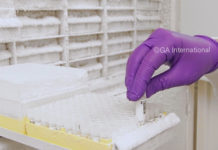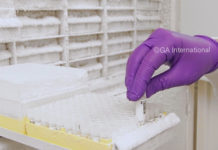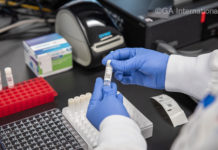Customer Background
The Montreal Chest Institute (MCI) Living Lab is located at the Glen site as part of the Research Institute of the McGill University Health Centre (RI-MUHC), currently led by Dr. Basil Petrof and Dr. Sushmita Pamidi. The Living Lab is a biobank that regroups researchers and clinicians studying respiratory diseases and disorders through collecting data and biological samples. The Living Lab allows patients to become active participants in their own treatment, offers more personalized care, and contributes to advancing the field of respiratory medicine.
The Challenge
As part of standard biobanking protocol in the Living Lab, 2 mL tubes are identified with barcode labels and stored in boxes and freezer racks at ultra-low temperatures, which are -80°C. However, previous labeling practices presented three primary challenges:
- Labels frequently failed to remain affixed during low-temperature storage
- There was limited availability of label formats and customization options
- High label costs impacted overall budget efficiency
Given the lab’s reliance on precise and durable labeling for long-term freezer storage, these challenges created bottlenecks in inventory tracking and sample management. To improve reliability and performance, the team consulted GA International for a solution using LabTAG’s specialized identification solutions.
Tailoring a Solution
To support their existing use of the DYMO LabelWriter™ 450 printer and enhance sample identification, the lab turned to LabTAG’s patented DYMO-compatible CryoSTUCK® cryogenic labels for frozen surfaces (SPEDCS-070WH).
Following the launch of the partnership between DYMO and GA International, an upgrade to the DYMO LabelWriter™ 550 printing kit was recommended. This new solution features DYMO-branded CryoSTUCK® cryogenic labels (LWCS-504-WH) for frozen surfaces, which adhere to surfaces of temperatures as low as -80°C. This allows for re-labeling tubes already stored in cryogenic conditions without requiring thawing, preserving sample integrity and workflow efficiency.
These labels directly addressed a major issue from the Living Lab, which noted, “An important improvement for us was the labels staying on the tubes and boxes after freezing. We struggled with labels coming off the tubes during the inventory process. This was resolved after using the LabTAG products.”
The team also discovered several key benefits of the new printer and labels that significantly improved their workflow. Firstly, the labels offered a wider range of printing options, including inkless printing (without inked ribbon) of high-quality barcodes, QR codes, images, and text, making scanning tubes and applying labels more efficient. Additionally, the printer’s high-speed performance helped increase overall productivity
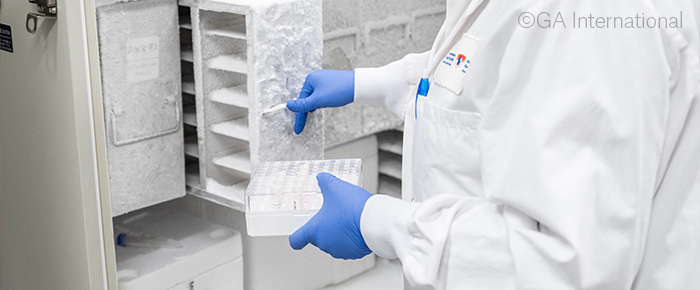
Another important advantage is the patented Automatic Label Recognition™ feature, which automatically detects label size, type, and remaining quantity significantly reducing labeling errors and minimizing waste. To support their updated workflow, the team also adopted DYMO® Connect™ Software, included with the new printer. This software integrates seamlessly with their Laboratory Information Management System (LIMS) and enables printing of durable, scannable labels including various 1D and 2D barcodes thereby enhancing sample tracking and inventory management.
The Living Lab team highlighted that expert label recommendations and prompt support from the GA International team were vital to their successful sample management. The team provided free LabTAG label samples quickly and offered immediate assistance when the lab switched printers, ensuring a smooth transition with no calibration required.

Conclusion
Using LabTAG labels led to a significant improvement in sample management consistency and accuracy. These durable labels withstood the low-temperature conditions required by the Living Lab, enhancing their ability to track and trace samples throughout the biobank. Paired with the DYMO LabelWriter™ 550 upgrade and seamless software integration, the Living Lab streamlined its labeling workflow for greater efficiency.
As their biobank continues to grow in sample volume, the need for further identification optimization may arise, potentially incorporating advanced technologies such as radio-frequency identification (RFID) and enhanced inventory management systems in the future.
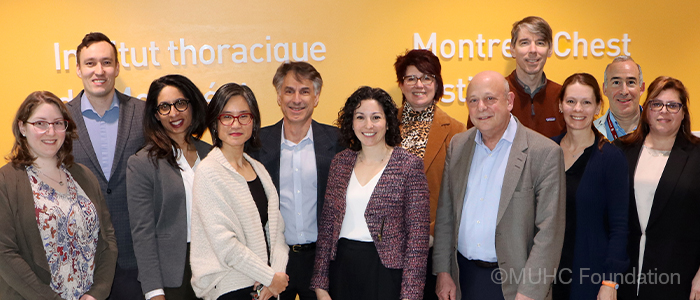
Photo credit: MUHC Foundation
We’re honored to have collaborated with the dedicated team at the Montreal Chest Institute’s Living Lab, led by Dr. Basil Petrof and Dr. Sushmita Pamidi. Their commitment to advancing respiratory research and patient-centered care is both impactful and inspiring. We’re proud that LabTAG’s labeling solutions could support their critical work behind the scenes.
